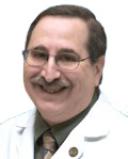Bipolar Disorder
Bipolar Spectrum Disorder: A Problematic Concept
Subthreshold Bipolar Disorder – Not Ready for Prime Time
Posted May 9, 2011
About 1% of our population suffers from "no doubt about it" bipolar affective disorder (bipolar I disorder). Persons with this disorder experience serious episodes of both depression and mania that can last for weeks to years. Manic symptoms are dramatic and disruptive, and typically include elevated or irritable mood, inappropriate self-esteem (grandiosity), markedly decreased need for sleep, excessive energy, hypertalkativeness (often with rapid and uninterruptable speech), and extremely bad judgment, often involving sexual behaviors or financial decisions. Psychotic symptoms, including auditory and visual hallucinations, and delusional thinking (such as believing that one is God), are common and disruptive. Untreated, this illness severely impairs function and can lead to disability and death. Many, but not all, patients with bipolar I disorder respond well to currently available treatments. Patients are usually treated with medications along with education and rehabilitative therapies.
Another type of bipolar affective disorder is called bipolar II disorder. Persons with this disorder demonstrate elevated mood and/or irritability and fewer (perhaps 3 or 4) of the above symptoms, which may last for only several days or may be more persistent. Importantly, symptoms represent a noticeable change from a person's usual behavior and cause significant distress and impairment, but usually not to the degree that occurs in bipolar I disorder. Psychotic symptoms are absent. Clinically, bipolar II disorder appears to be a close relative to bipolar I disorder. Although there are not a lot of well designed treatment trials, most psychiatrists treat patients suffering from bipolar II disorder with approaches similar to those used in the treatment of bipolar I disorder.
Recent studies have extended the concept of bipolar disorder to include a diagnosis of "subthreshold bipolar disorder." This "condition" is variably defined as consisting of mild forms of one or two of the above behaviors lasting for a variable (sometimes unspecified) period of time. For instance, a person may exhibit increased talkativeness or irritability, demonstrate mildly elevated self-esteem, or experience more energy than usual for several days. Such a "condition" has been associated with some interference with life achievements. Other psychiatric conditions such as anxiety disorders, personality disorders, and substance abuse disorders may co-occur with this "subthreshold bipolar disorder."
So, what's the problem?
It is clinically difficult to define the border between a variant of normal behavior and the behaviors that are associated with "subthreshold bipolar disorder." Furthermore, it is difficult to determine whether the symptoms represent a true change in behavior and, if so, the cause(s) of these behavioral changes. Thus, these behaviors might reflect underlying personality, anxiety, substance abuse, or reactions to psychosocial stressors. Labeling such behaviors as "bipolar spectrum" suggests that the brains of affected people have a milder form of the pathology that exists in the brains of persons with major bipolar disorder. This may or may not be true, but it suggests that treatments for bipolar I disorder are appropriate for these milder symptoms. This is a dangerous "leap of faith."
Treatments for bipolar disorder include mood stabilizers such as lithium, mood stabilizing anticonvulsants, and antipsychotic medications. These are powerful drugs with significant and sometimes dangerous side effects. When used for bipolar I disorder, the benefits of these treatments usually outweigh the risks.
At present, we are unaware of any convincing evidence that persons who fulfill the research definition of "subthreshold bipolar disorder" respond to "mood stabilizing" treatments. On the other hand, we are aware of many patients coming to emergency rooms and clinics who claim to have "bipolar disorder" and who are being prescribed a large number of psychiatric drugs for vague and unclear indications. Is it possible that by broadening the label of bipolar disorder to include "subthreshold" bipolar spectrum, psychotropic drugs are being overused? We believe it is not only possible but likely that this broadened concept of bipolar disorder is leading to substantial increases in use of these medications. Certainly, if a major depression is present, antidepressants and rehabilitative therapies may be appropriate. Our concern is about the potential overuse of antipsychotic medications, mood stabilizing anticonvulsants, and lithium.
We strongly believe in the need for rigorous research. We believe that studies must be done to determine what happens over time to persons who demonstrate the one or two behavioral symptoms that currently are used to define "subthreshold bipolar disorder." Do such patients continue to demonstrate mild symptoms over time? Do these symptoms spontaneously go away, stay the same, or become worse? Do persons with "subthreshold" disorder develop full blown bipolar disorder, or do they have a clinical course more consistent with a personality disorder, substance use disorder, or anxiety disorder?
In addition, if persons with this diagnosis indeed have a course that suggests that they have a mild form of bipolar disorder, it is important to establish whether symptoms respond to our current treatments. It has already become clear that patients with milder and more chronic forms of depression, often complicated by personality disorders and other co-morbid psychiatric and medical disorders, do not respond as well to antidepressant medications as individuals with more severe primary forms of depression. This has led to a growing misunderstanding about the effectiveness of antidepressants and their side effects. Because all psychiatric medications can have serious side effects, careful studies must be done before psychiatrists and primary care physicians prescribe lithium, mood stabilizing anticonvulsants, or antipsychotics for subthreshold bipolar disorder.
In our opinion, we are in the midst of a poly-psychopharmacy crisis driven by the mistaken belief that psychotropic medications are the remedies for all ailments of the mind. The misuse and overuse of medications can hurt patients and hurt our field. For these reasons, psychiatry must return to basics in terms of careful diagnosis, follow up, and judicious use of medications. At the current time, the unproven and unvalidated concept of subthreshold bipolar disorder is likely doing more harm than good.
This column was co-written by Eugene Rubin MD, PhD and Charles Zorumski MD.




